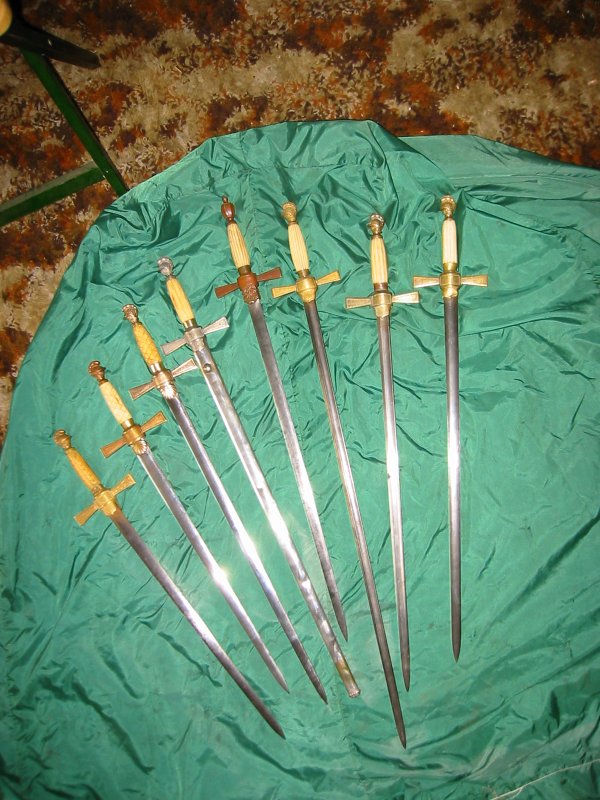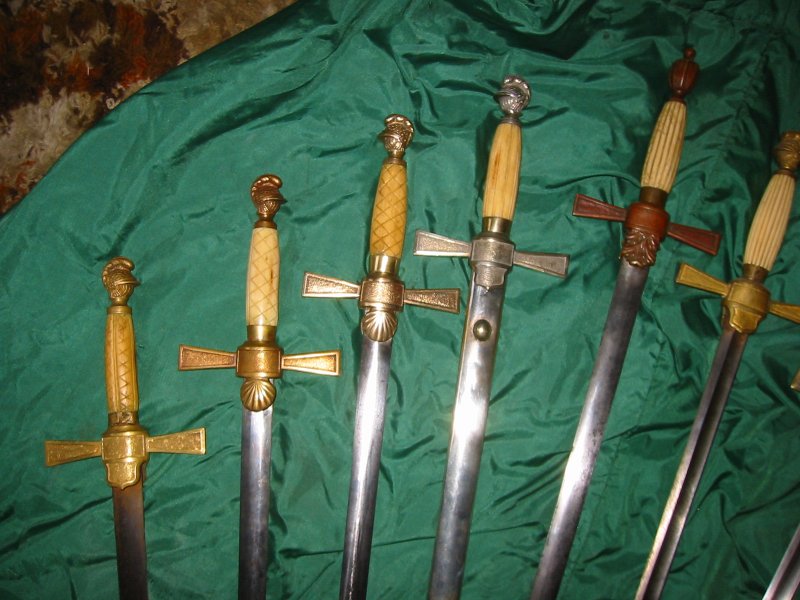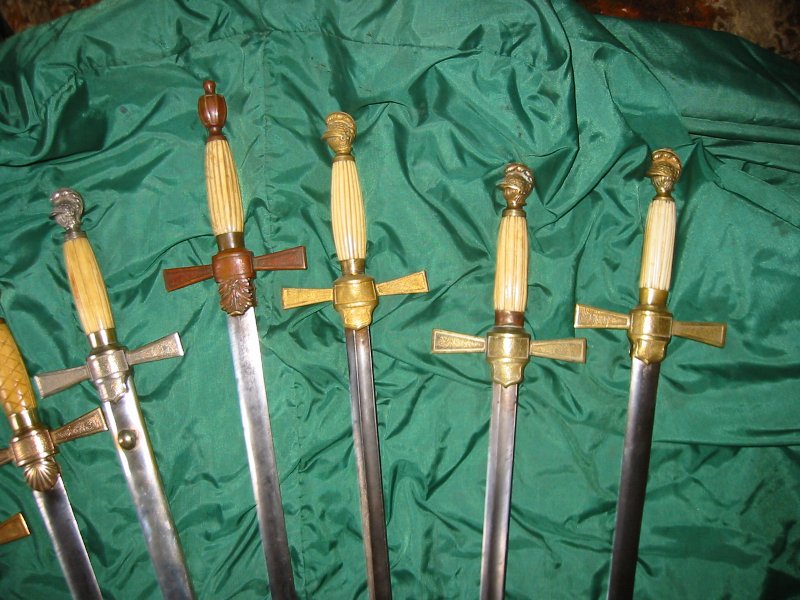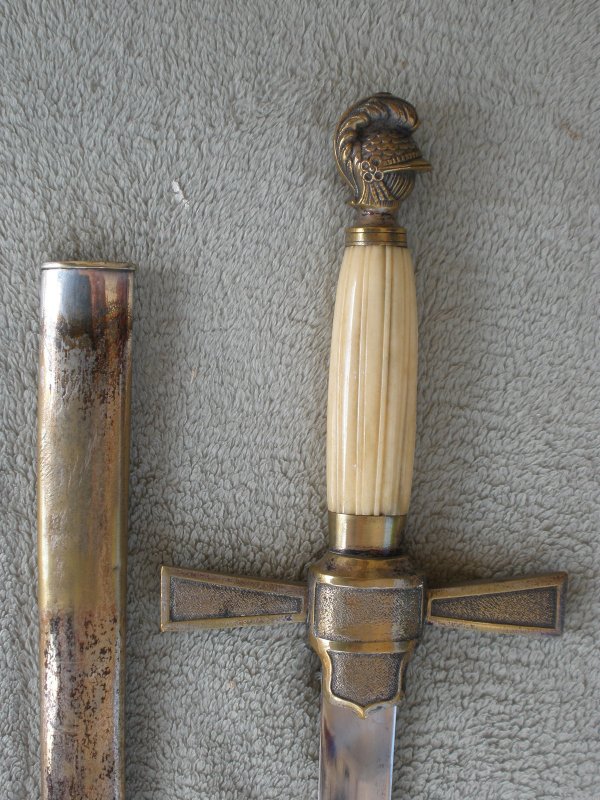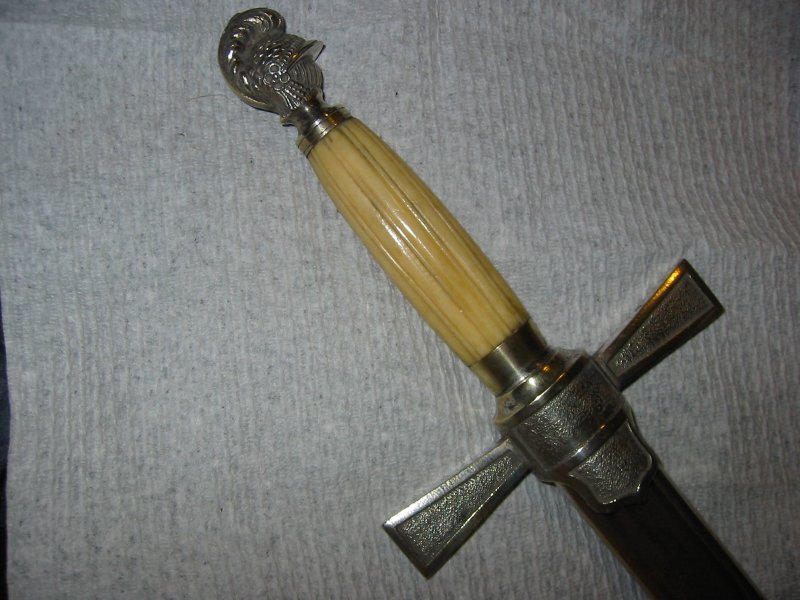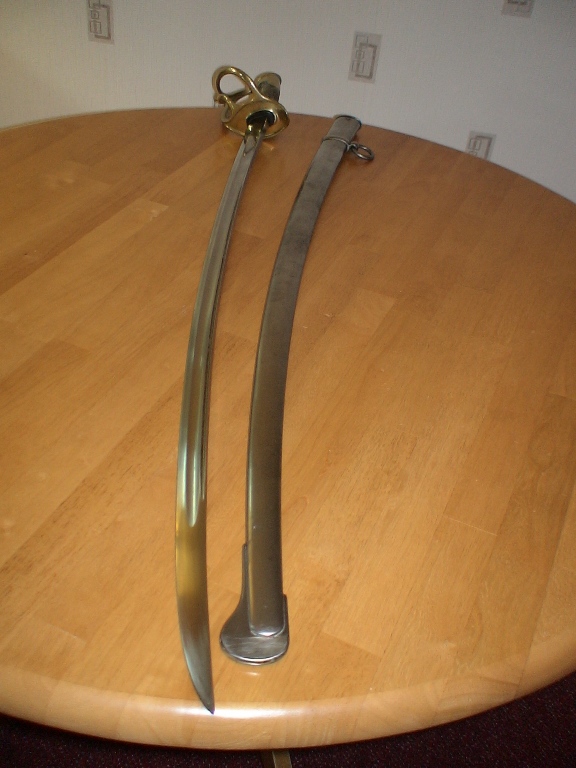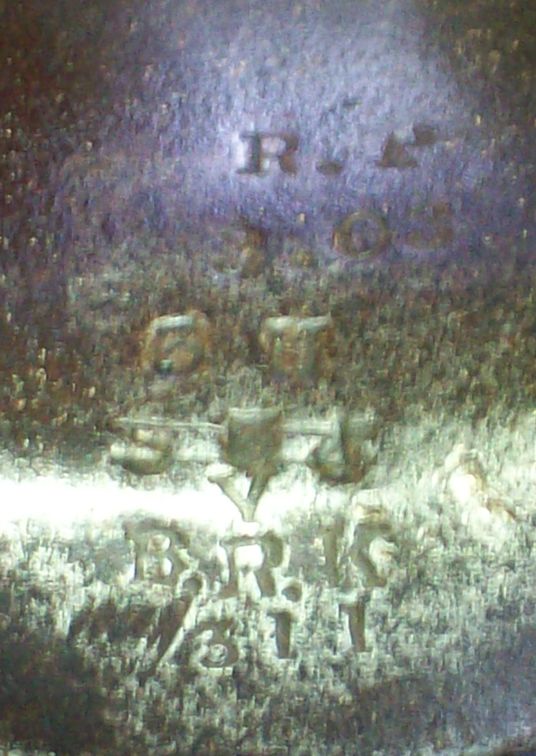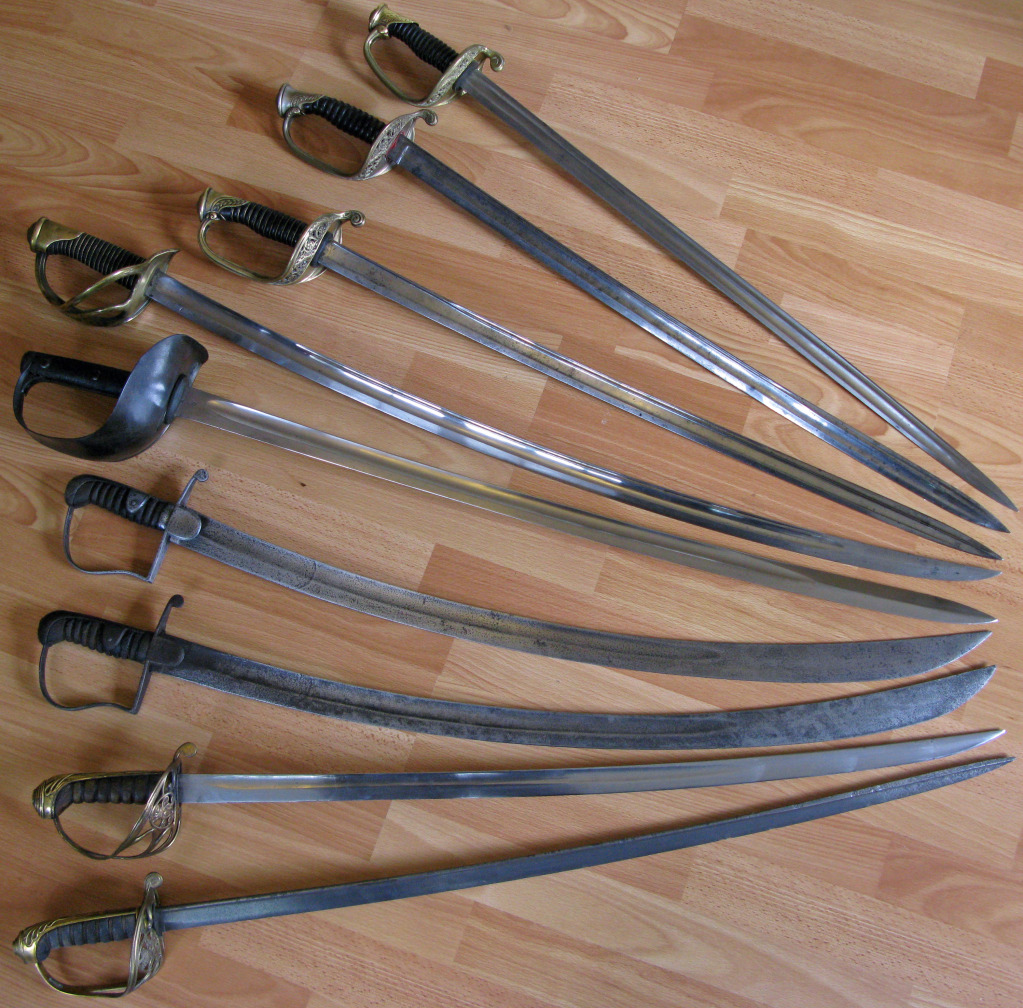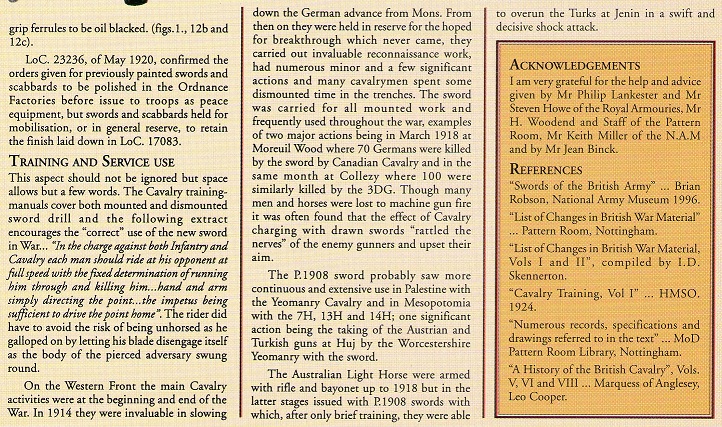It has been three years since my last sword! Last weekend I attended the "Show of Shows" military show in Louisville, KY. It is a huge show with nearly 2000 tables. The two big shows I had attended previously, the Hartford Antique Arms Show and the Baltimore Antique Arms Show both (I believe) have an 1898 cutoff date for firearms, which tends to attract more antique arms dealers. The Show of Shows had a lot more 20th century items, especially WWII firearms, bayonets, uniforms, and equipment.
Compared to the other two shows mentioned above, swords were relatively scarce (unless you wanted German or Japanese swords). My main interest is British swords of the 19th century, and there were a few to be found on the show floor. To me they were very pricey for what they were, and as might be expected a number were misidentified and there was one replica being sold as antique (due to ignorance, not an intent to deceive).
I was beginning to lose hope in finding anything, but then I stumbled across a table with four swords and loads of other small militaria. One of the swords was a British Pattern 1821 Light Cavalry Officer's Sword in very sad condition. I asked to see it, and then gave it a close inspection. I am glad I did not dismiss it based on its condition! The first thing I noticed was the sharp blade, then I spotted the rampant lion on the East India Company (EIC), officer's initials, and an etched cartouche with Urdu (?) script! I was able to buy it at a low price and my heart was beating quickly as I walked away from the table with my new acquisition. I was thrilled to finally have a new sword and excited about the research potential.
I am still researching the owner, as it has taken some time to narrow down possibilities, but I knew going into it that it probably belonged to a veteran of the Indian Mutiny (Rebellion, Uprising, India’s First War of Independence, etc.). For now I will just present the sword itself.
The sword is a Pattern 1821 Light cavalry Officer’s Sword made by Henry Wilkinson. Before 1854 Wilkinson did not put serial numbers on the officers’ swords, so this sword is pre-1854 because it lacks a serial number on the spine. It does not have a scabbard.
The dark, pitted, but still sharp blade is etched on the ricasso with “Henry Wilkinson Pall Mall London” on one side (inside flat), and two interlocking triangles with a brass proof disc on the other (outside flat). Just above the ricasso on the ouside flat of the blade is a small etched cartouche with Urdu (?) script which, based on other EIC swords of the period, should translate to “Henry Wilkinson Pall Mall London”. Also on the outside flat of the blade is etched the standard scrolling foliage and the EIC lion. On the inside flat of the blade is more scrolling foliage with a VR cypher, and just below that is a small etched cartouche with the owner’s initials “FCG”. The blade had traces of silver paint which I removed.
The hilt is of standard form for the pattern, and it was painted black at some point, presumably to stabilize rust which covered much of the backstrap. It has a very prominent stepped pommel, which is typical of earlier P1821s, although by the early 1850s domed chequered pommels were also in use for cavalry swords. The grip is missing its fish skin and there is some loss to the silver wire wrap. I decided to leave the back paint on the hilt because it would be difficult to remove and it has mostly contained the rust.
I will report back when I have done more research on the original owner of the sword.
 Attachment: 154.7 KB
Attachment: 154.7 KB
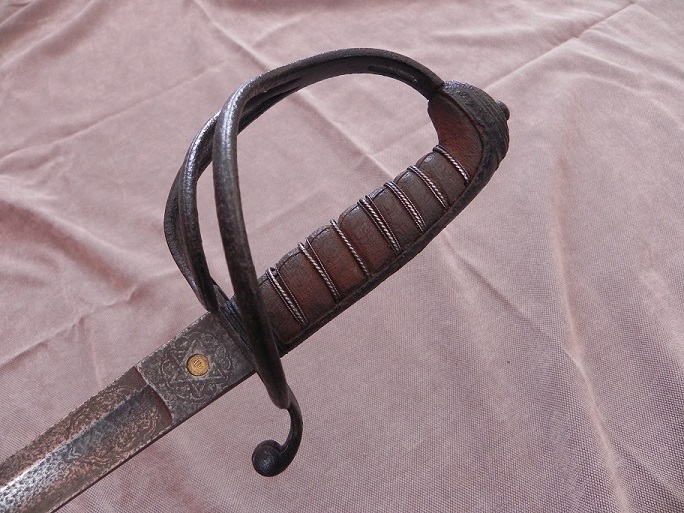
 Attachment: 138.82 KB
Attachment: 138.82 KB
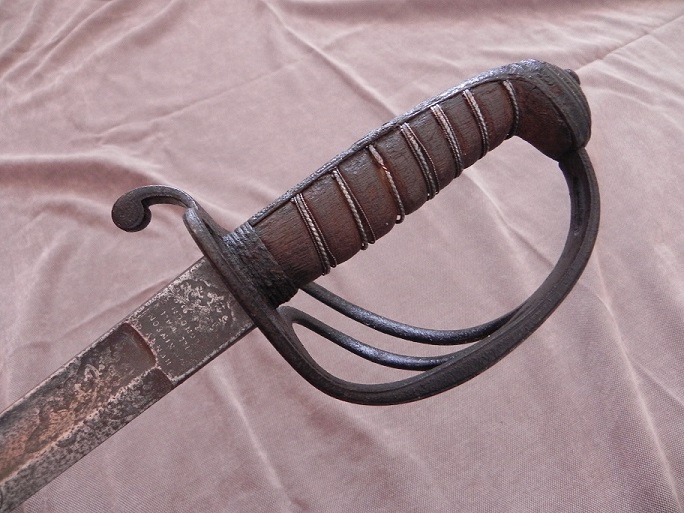
 Attachment: 108.17 KB
Attachment: 108.17 KB
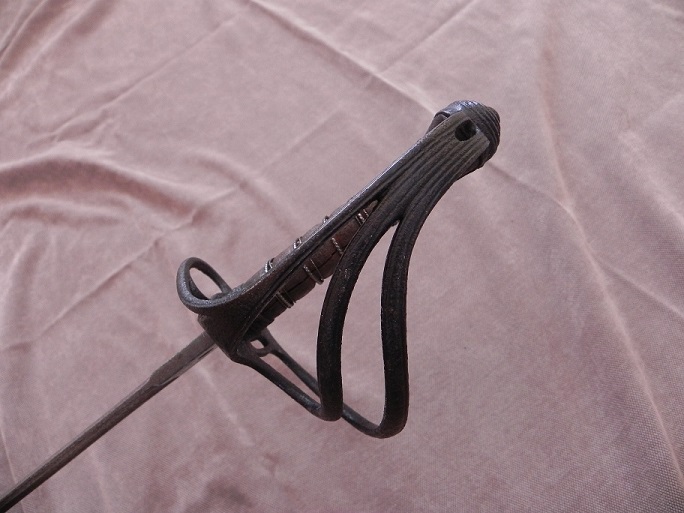
 Attachment: 125.22 KB
Attachment: 125.22 KB
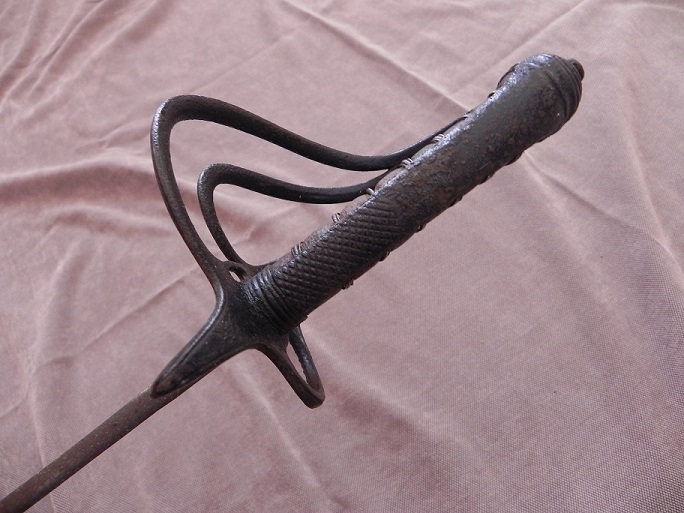
 Attachment: 163.09 KB
Attachment: 163.09 KB
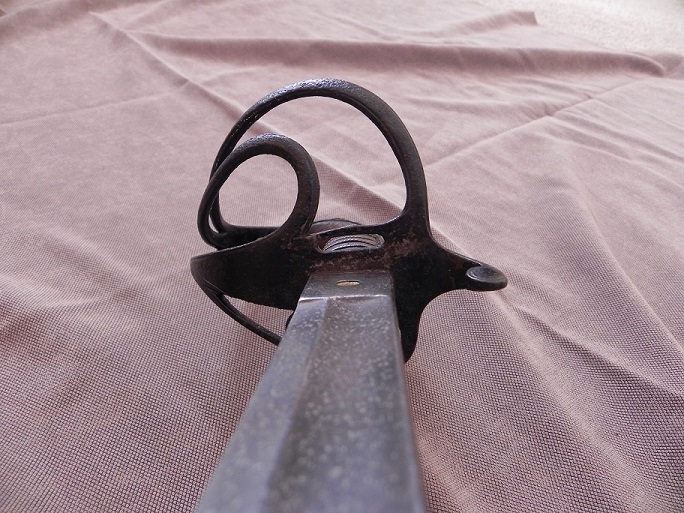
 Attachment: 168.13 KB
Attachment: 168.13 KB
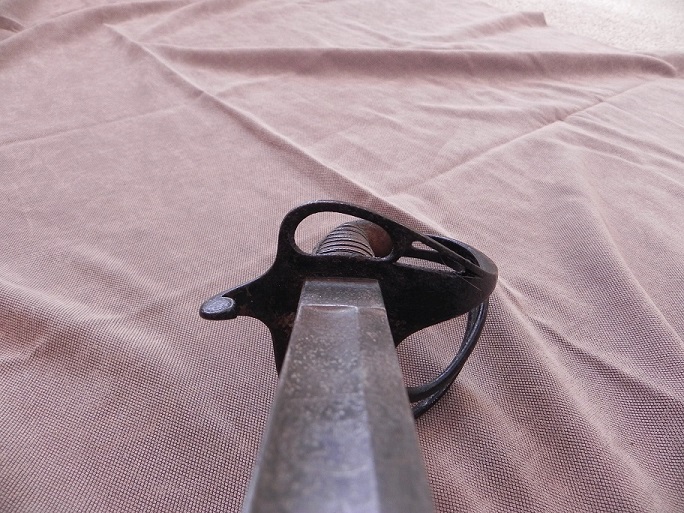
 Attachment: 103.8 KB
Attachment: 103.8 KB
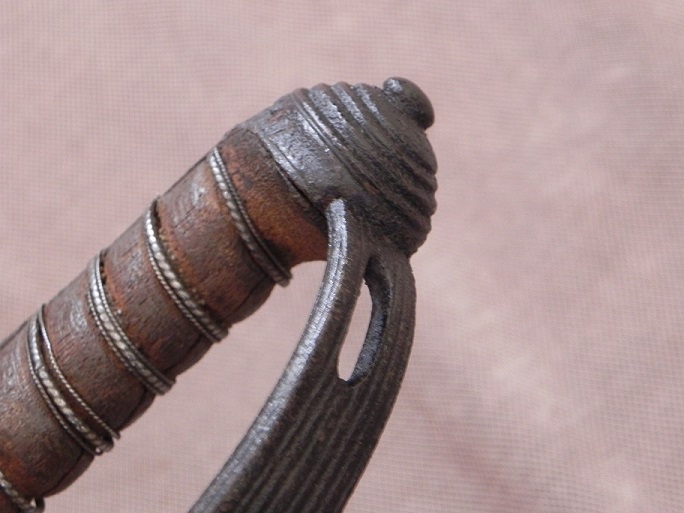
 Attachment: 39.46 KB
Attachment: 39.46 KB







